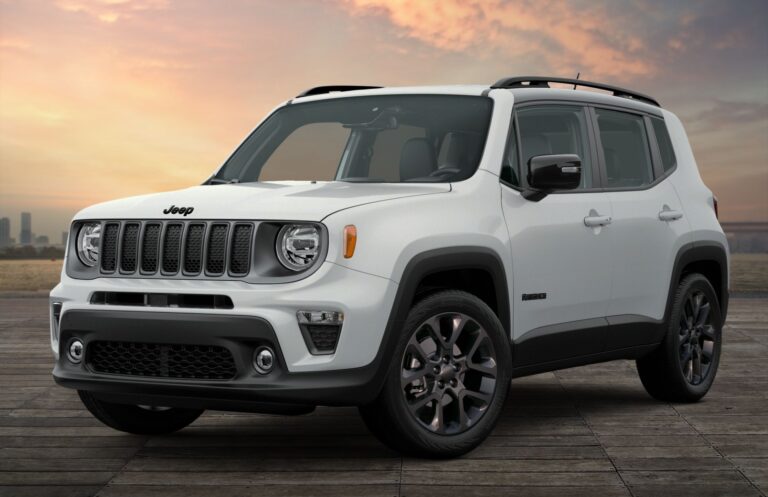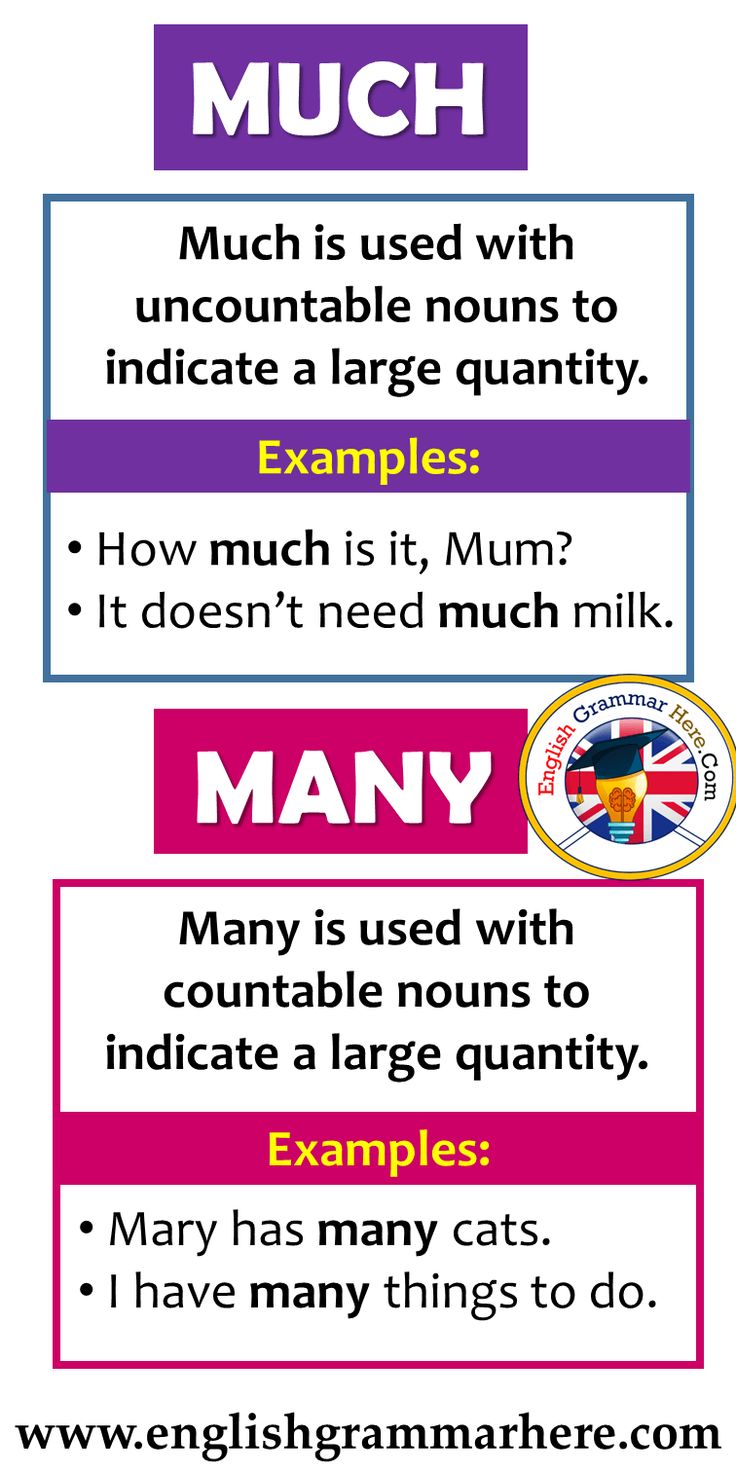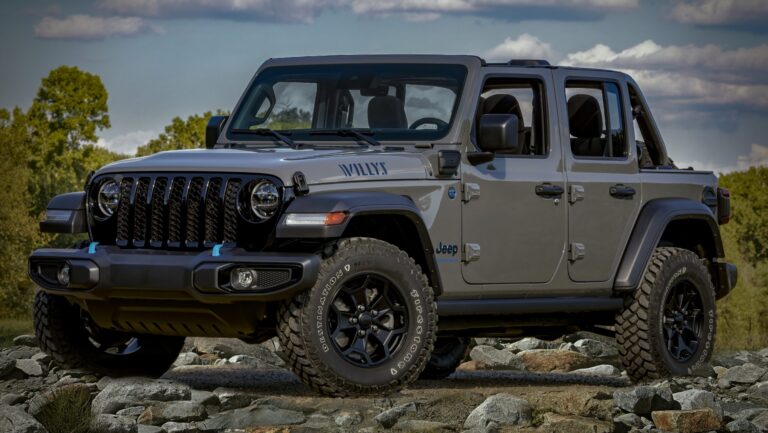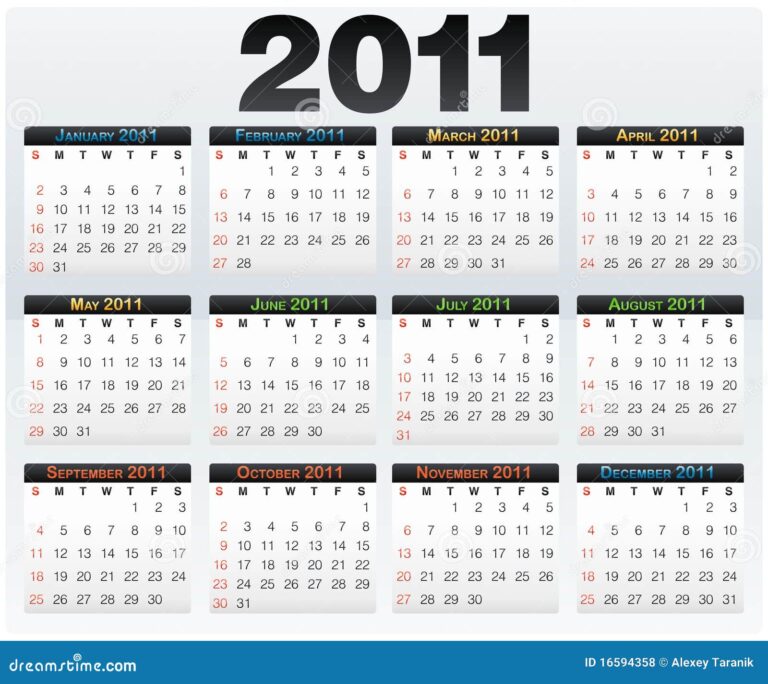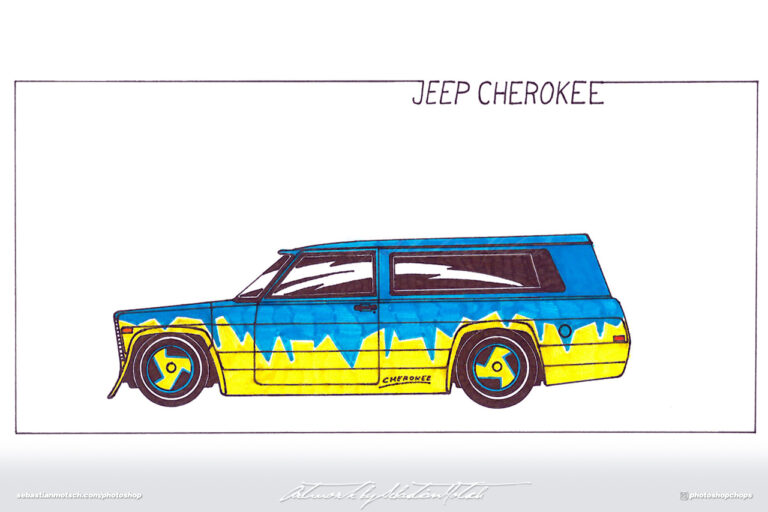2000 Jeep Grand Cherokee Rims For Sale: A Comprehensive Buyer’s Guide
2000 Jeep Grand Cherokee Rims For Sale: A Comprehensive Buyer’s Guide jeeps.truckstrend.com
The 2000 Jeep Grand Cherokee, part of the beloved WJ generation, stands as a testament to rugged capability blended with everyday comfort. Even two decades later, these vehicles remain a popular choice for adventurers, commuters, and enthusiasts alike. A crucial component that significantly impacts the performance, safety, and aesthetic appeal of your WJ Grand Cherokee is its set of rims. Whether you’re looking to replace a damaged wheel, upgrade your vehicle’s look, or prepare for seasonal tire changes, navigating the market for 2000 Jeep Grand Cherokee Rims For Sale requires careful consideration and knowledge. This comprehensive guide will equip you with everything you need to know to make an informed purchase.
Understanding Your 2000 Jeep Grand Cherokee Rims: Key Specifications
2000 Jeep Grand Cherokee Rims For Sale: A Comprehensive Buyer’s Guide
Before you begin your search for 2000 Jeep Grand Cherokee Rims For Sale, it’s paramount to understand the original equipment manufacturer (OEM) specifications. These details dictate proper fitment, ensuring your new rims integrate seamlessly with your vehicle’s suspension and braking systems, maintaining optimal performance and safety.
- Bolt Pattern (PCD – Pitch Circle Diameter): The most critical specification is the bolt pattern, which for the 2000 Jeep Grand Cherokee is 5×5 inches (or 5x127mm). This means the wheel has five lug nut holes, and they are arranged in a circle with a diameter of 5 inches (127 millimeters). Any rim you consider must match this bolt pattern.
- Center Bore: The center bore is the hole in the middle of the rim that fits over the vehicle’s hub. For the 2000 Grand Cherokee, the center bore is 71.5mm. Ideally, the new rim’s center bore should match this exactly (hub-centric fit). If it’s larger, you’ll need hub-centric rings to ensure the wheel is perfectly centered and to prevent vibrations.
- Offset: Offset is the distance from the mounting surface of the wheel to the true centerline of the wheel. It’s measured in millimeters and can be positive, negative, or zero.
- Positive Offset: The mounting surface is towards the front (outboard) side of the wheel. This pulls the wheel inward towards the vehicle. Most OEM WJ rims have a positive offset (typically +25mm to +50mm).
- Negative Offset: The mounting surface is towards the back (inboard) side of the wheel. This pushes the wheel outward from the vehicle. Common for aggressive aftermarket setups.
- Zero Offset: The mounting surface is directly at the centerline of the wheel.
Choosing the correct offset is crucial to avoid rubbing issues with fenders or suspension components, especially if you plan to install wider tires.

- Stock Sizes: OEM rims for the 2000 Grand Cherokee came in various diameters and widths, commonly including:
- 16×7 inches
- 17×7 inches
- 17×7.5 inches
- 18×7.5 inches
The "Limited" and "Overland" trims often featured larger, more styled rims compared to the "Laredo" models.


- Material: Most factory rims are made from aluminum alloy, offering a good balance of strength, weight, and aesthetics. Steel wheels are also an option, particularly for utility or off-road use, known for their durability and lower cost, though they are heavier.
Understanding these specifications is your first line of defense against compatibility issues when searching for 2000 Jeep Grand Cherokee Rims For Sale.
Why Purchase Rims for Your 2000 Grand Cherokee?
There are numerous compelling reasons why owners might be in the market for new or replacement rims for their WJ:
- Replacement of Damaged Rims: Potholes, curb rash, accidents, or even age can lead to bent, cracked, or severely corroded rims. A damaged rim can cause vibrations, premature tire wear, and even safety hazards.
- Aesthetic Upgrade: Rims significantly contribute to a vehicle’s overall look. Upgrading to a different style, size, or finish can dramatically change your Grand Cherokee’s appearance, making it more modern, aggressive, or unique.
- Performance Enhancement: Lighter aftermarket rims can reduce unsprung weight, potentially improving acceleration, braking, and handling. Wider rims can accommodate wider tires for increased grip.
- Seasonal Tire Sets: Many owners choose to have a dedicated set of rims for winter tires (often steel for durability and cost-effectiveness) and another for summer or all-season tires. This makes seasonal tire swaps much easier and prolongs the life of both tire sets.
- Off-Roading Needs: For off-road enthusiasts, specific types of rims (e.g., beadlock-capable, steel, or highly durable alloys) are preferred for their strength and ability to handle challenging terrain.
- Restoration Projects: For those restoring a 2000 Grand Cherokee to its original glory, finding period-correct OEM rims is essential for an authentic look.
- Full-Size Spare: Many vehicles come with a temporary spare. Having a full-size spare on a matching rim provides greater peace of mind, especially on long trips or off-road excursions.
Types of Rims Available for the 2000 Grand Cherokee
When looking for 2000 Jeep Grand Cherokee Rims For Sale, you’ll primarily encounter three categories:
-
OEM (Original Equipment Manufacturer) Rims:
- Description: These are the rims that came standard on the 2000 Grand Cherokee from the factory. They are designed for a perfect fit and typically maintain the vehicle’s original aesthetic. Popular OEM styles include the "Icon" (5-spoke), "Limited" (multi-spoke), and "Laredo" (6-spoke) wheels.
- Pros: Guaranteed fitment, factory appearance, often durable.
- Cons: Limited style choices, can be expensive when new or refurbished. Used OEM rims might show signs of wear.
- Best For: Restorations, direct replacements, maintaining stock appearance.
-
Aftermarket Alloy Rims:
- Description: Manufactured by third-party companies, aftermarket rims offer an incredibly vast array of styles, finishes (chrome, black, polished, painted), sizes, and designs. They can range from budget-friendly options to high-performance, lightweight wheels.
- Pros: Extensive style variety, ability to customize your vehicle’s look, potential for weight savings, options for different offsets and widths.
- Cons: Quality can vary significantly between brands, requires careful attention to specifications (bolt pattern, center bore, offset) to ensure proper fitment, some designs may require hub-centric rings or different lug nuts.
- Best For: Customization, performance upgrades, unique aesthetics. Popular brands include American Racing, Cragar, Method Race Wheels, Fuel Off-Road, and many more.
-
Steel Wheels:
- Description: Made from pressed steel, these rims are typically heavier and less aesthetically refined than alloy wheels but are known for their exceptional durability and affordability. They often come in black or silver finishes.
- Pros: Very durable, resistant to bending (though they can rust), inexpensive, ideal for off-roading, winter use, or as a utilitarian spare.
- Cons: Heavy (can impact fuel economy and handling slightly), limited style options, prone to rust if not properly maintained or coated.
- Best For: Off-road use, winter tire setups, budget-conscious replacements, heavy-duty applications.
Where to Find 2000 Jeep Grand Cherokee Rims For Sale
The market for 2000 Jeep Grand Cherokee Rims For Sale is diverse, offering both new and used options through various channels:
- Online Marketplaces:
- eBay, Amazon: Excellent for finding both new aftermarket rims and used OEM rims. Be sure to check seller ratings, read descriptions carefully, and verify specifications.
- Facebook Marketplace, Craigslist: Ideal for local pickup of used rims. This allows you to inspect the rims in person before purchasing, saving on shipping costs. Use specific search terms like "WJ Grand Cherokee Rims" or "Jeep 5×5 Rims."
- Dedicated Jeep Forums & Enthusiast Groups: Online communities (e.g., JeepForum.com, GrandCherokeeForum.com) often have "For Sale" sections where members sell parts. These sellers are often knowledgeable and can provide specific details.
- Specialized Retailers:
- Tire Rack, Discount Tire, Quadratec, Summit Racing: These large online and brick-and-mortar retailers offer a vast selection of new aftermarket rims specifically designed for vehicles like the Grand Cherokee. They often have fitment guides and customer service to help.
- Local Tire Shops: Your local tire and wheel shop may have a selection of new aftermarket rims, or even used take-offs. They can also assist with installation and balancing.
- Salvage Yards / Junkyards: A treasure trove for used OEM rims. Call ahead to inquire about availability for a 2000 Jeep Grand Cherokee. Inspection is crucial here, as rims might have hidden damage.
- Pawn Shops & Swap Meets: Less reliable sources, but occasionally you might stumble upon a good deal.
Important Considerations Before Buying
Making a smart purchase when looking for 2000 Jeep Grand Cherokee Rims For Sale involves more than just finding the right bolt pattern.
- Condition (Especially for Used Rims):
- Visual Inspection: Look for cracks, bends, deep gouges, or excessive curb rash. Minor cosmetic flaws might be acceptable, but structural damage is a deal-breaker.
- Corrosion: Check for signs of rust (on steel) or oxidation (on alloy), especially around the lug holes and bead seat area.
- Roundness: While hard to check without equipment, a visibly warped rim is a red flag. If possible, ask for a video of the rim spinning on a balancer.
- Fitment Verification: Always double-check the bolt pattern (5×5 or 5x127mm), center bore (71.5mm), and ensure the offset is compatible with your vehicle and intended tire size. Use online wheel fitment calculators if unsure.
- Size Compatibility: If you’re going for larger rims or wider tires than stock, research potential rubbing issues with fenders or suspension components. A lift kit might be necessary for significant size increases.
- Material Choice: Decide between alloy (lighter, more styles) and steel (durable, cheaper) based on your priorities.
- Price and Budget: Compare prices from multiple sources. Remember to factor in shipping costs if buying online. Don’t forget potential costs for new lug nuts, hub-centric rings, and professional installation/balancing.
- Tires (if included): If you’re buying a wheel and tire package, inspect the tires’ tread depth, age (DOT date code), and condition (no cracks or bulges). A "great deal" on rims can quickly turn sour if the tires are junk.
- Lug Nuts: Aftermarket rims sometimes require different types of lug nuts (e.g., acorn style, spline drive) than OEM rims. Verify this with the seller or manufacturer.
Installation and Maintenance Tips
Once you’ve acquired your 2000 Jeep Grand Cherokee Rims For Sale, proper installation and ongoing maintenance are key to their longevity and your vehicle’s performance.
- Professional Installation and Balancing: While some DIYers can mount tires, professional installation and balancing are highly recommended. Proper balancing prevents vibrations and ensures even tire wear.
- Torque Specifications: Always use a torque wrench to tighten lug nuts to the manufacturer’s specified torque (typically 95-115 ft-lbs for a 2000 Grand Cherokee). Over-tightening can stretch studs, and under-tightening can lead to loose wheels. Re-check torque after 50-100 miles.
- Regular Cleaning: Keep your rims clean from brake dust, road grime, and salt (especially in winter). Use appropriate wheel cleaners for your rim finish. This prevents corrosion and maintains their appearance.
- Tire Rotation: Regular tire rotation (e.g., every 5,000-7,000 miles) helps distribute wear evenly across all four tires and rims.
- Inspect Periodically: Give your rims a visual inspection every few months, especially after hitting potholes or driving on rough terrain, to catch any potential damage early.
Estimated Price Range for 2000 Jeep Grand Cherokee Rims
Prices for 2000 Jeep Grand Cherokee Rims For Sale can vary significantly based on condition, type, brand, and whether they are sold individually or as a set.
| Rim Type / Condition | Single Rim (Approx. USD) | Set of 4 Rims (Approx. USD) | Notes |
|---|---|---|---|
| Used OEM Rims | $50 – $150 | $200 – $500 | Condition varies widely; cosmetic flaws common. Check for structural integrity. Often found locally. |
| Refurbished OEM Rims | $150 – $250 | $600 – $1000 | Professionally repaired and refinished. Near-new appearance. Good balance of cost and quality. |
| New Aftermarket (Basic) | $100 – $200 | $400 – $800 | Entry-level alloy rims from lesser-known brands. Good for general replacement or aesthetic upgrade. |
| New Aftermarket (Premium) | $200 – $400+ | $800 – $1600+ | Well-known brands, specialized designs, lighter weight, higher quality finishes. Performance-oriented. |
| New Steel Wheels | $40 – $70 | $160 – $280 | Most affordable option. Durable, often used for winter tires or off-roading. Limited aesthetic appeal. |
Note: Prices are estimates and do not include shipping, installation, balancing, or lug nuts.
Frequently Asked Questions (FAQ) about 2000 Jeep Grand Cherokee Rims For Sale
Q: What is the exact bolt pattern for a 2000 Jeep Grand Cherokee?
A: The bolt pattern is 5×5 inches, also expressed as 5x127mm.
Q: Can I put larger rims on my 2000 Grand Cherokee (WJ)?
A: Yes, you can typically go up in rim size (e.g., from 16" to 17" or 18") as long as the bolt pattern and center bore are correct, and the offset allows for proper clearance with your brakes and fenders. For significantly larger diameters or wider tires, a lift kit might be necessary to prevent rubbing.
Q: Are all 5×5 rims compatible with my WJ?
A: Not necessarily. While the bolt pattern is correct, you must also verify the center bore (71.5mm) and the offset. An incorrect center bore will require hub-centric rings, and an incorrect offset can cause rubbing or handling issues.
Q: How can I tell if a used rim is bent or cracked?
A: Visually inspect the rim carefully for any hairline cracks, especially around the spokes and lug holes. Look for flat spots or obvious distortions on the barrel (the part where the tire mounts). If possible, have a tire shop spin it on a balancer to check for run-out or wobbling.
Q: Should I buy new or used rims?
A: It depends on your budget and priorities. Used rims are more affordable but come with the risk of hidden damage or cosmetic flaws. New rims offer peace of mind with no damage and often come with warranties, but at a higher cost.
Q: Do I need hub-centric rings for aftermarket rims?
A: If the aftermarket rim’s center bore is larger than your Grand Cherokee’s hub (71.5mm), then yes, hub-centric rings are highly recommended. They ensure the wheel is perfectly centered on the hub, preventing vibrations and ensuring proper load distribution.
Q: What is the correct torque for lug nuts on a 2000 Jeep Grand Cherokee?
A: The recommended torque specification for lug nuts on a 2000 Jeep Grand Cherokee is typically between 95 and 115 ft-lbs (foot-pounds). Always consult your owner’s manual for the exact specification.
Conclusion
Finding the right 2000 Jeep Grand Cherokee Rims For Sale can significantly enhance your vehicle’s performance, safety, and curb appeal. By understanding the critical OEM specifications like bolt pattern, center bore, and offset, you empower yourself to make informed decisions. Whether you opt for a pristine set of OEM replacements, a stylish aftermarket upgrade, or a rugged set of steel wheels, careful inspection, comparison, and professional installation are key to a successful outcome. Your beloved WJ Grand Cherokee deserves wheels that not only look good but also perform flawlessly, ensuring many more miles of adventure on the road or trail.


